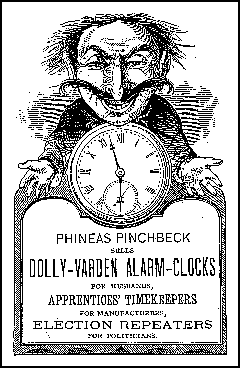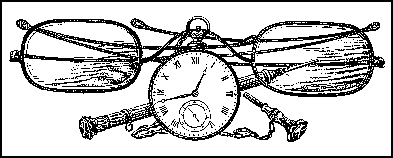The Long
Now
Time and Responsibility:
The Ideas Behind the World's
Slowest Computer
Stewart Brand
(Basic)
This age, known as Very Beautiful, Very Beautiful, lasted 400 trillion oceans of years, and gave way to that known as Very Beautiful, which --- as the name suggests --- was exactly half as fortunate as the former. The wish-fulfilling trees, the earth, and the waters were only half as bountiful as before. Men and women were only four miles tall, had only 128 ribs, lived for only two periods of countless years, and passed to the world of the gods when their twins were only 64 days old. This period lasted 300 trillion oceans of years, declining gradually but inevitably to the stage called Sorrowfully Very Beautiful, when joy became mixed with grief. --- Jainist story of origins, 6th Century BCE, from The Clock of the Long Now
|
 Stewart Brand and his merry band of eccentric æsthetes have come up with something they call "The Long Now." The idea is that you and I are generally befuddled, and the world is getting even more fuddled, because we aren't thinking about the future, because we can't. It is sweeping towards us so quickly that it is already gone by the time we can start figuring out what to do about it.
Stewart Brand and his merry band of eccentric æsthetes have come up with something they call "The Long Now." The idea is that you and I are generally befuddled, and the world is getting even more fuddled, because we aren't thinking about the future, because we can't. It is sweeping towards us so quickly that it is already gone by the time we can start figuring out what to do about it.
To help us with this paradox, these Nowians propose to do something which will invest us with a sense of time, and responsibility. For this, they want that we should, get this, build a clock:
I would like to propose a large (think Stonehenge) mechanical clock, powered by seasonal temperature changes. It ticks once a year, bongs once a century, and the cuckoo comes out every millennium.
Right. The world is falling apart, so we build a four-hundred-forty foot tall stone clock. In the Sonoran desert. At our leisure.
Obviously, if you want to make something like that last, you have to build it in the desert, in some sort of cave in the mountain (with holes, so you can still be part of the world, have some light). The parts of the clock will be simple and elegant, made of the cheapest, most easily available substance --- silicone.
The whole will be conjoined with a library of books, and directions for the use and care of books and clock. These won't be just any books, mind you, and certainly not all books --- but books carefully culled by those who have the taste and foresight to winnow through the gusher we now experience (60,000 new titles a year, in America alone) to pick the significant and the insightful.

Brand has continually buffaloed people because no one can figure out what the hell he does. We know he makes catalogues --- the elegant Whole Earth Catalogue was his first, large, and wonderful present to the world. Then there was the Co-Evolution Quarterly which devolved, after he left it, into a rather tendentious mish-mash, edited by a fretful bunch of intellectual knuckle-draggers. (Just to set the record straight, at the end there, he came back and edited just one edition of the CoEv: it was the best that had come out of Sausalito for a dozen years.)
Evidently, when he isn't starting things, he thinks. Now you and I think, but Brand thinks about the past, and thinks about the present, and thinks about the future --- and then, instead of throwing up his hands at the folly of mankind and going off to tie on a big one, he tries to do something about it. He forms it, molds it, joins it together --- in a way so that the rest of us can look at it and say, "Of course!" and "Aha!" and "Why didn't I think of that one?"
All while he is doing this, Brand is studiously apolitical. One of the wonders of the Whole Earth Catalogue was the catholicity of its sources --- government pamphlets were laid out cheek-by-jowl with revolutionary tracts and steep academic studies. Brand frets about the world, as most of us do --- but he's taught himself how to fret with a purpose. "Here is the problem," he says, "lets find a solution." And if there is no solution:
When a design problem resists solution, reframe the problem in such a way that it invites solution...An example of spontaneous reframing occurred in 01969, when the Apollo program began returning color photographs of the Earth from space. Everyone saw the photographs and saw that we occupied a planet that was beautiful, all one, very finite, and possible fragile..
As is usual with a Brand monograph, the prose is spare and elegant, and it moves all over the world, and time, with a novel vision. Environmentalists are referred to as "calamity callers." We may idealize the medieval period, but it was a time where you would have "rotten teeth, eat turnips, and die at the age of twenty-seven of exhaustion." Want to know about plant life over the last 300 centuries? You can study "woodrat middens in Nevada preserving thirty-three thousand years of seed and pollen samples in columns of amberlike rat excrement."
Need a nightmare? How about Chapter 14, and the "Digital Dark Age," that devilish problem of retrieving old computer data.
It turns out that what was so carefully stored was written with a now-obsolete application, in a now-obsolete operating system, on a long-vanished make of computer, using a now-antique storage medium...It doesn't matter that in those days everyone wrote with WordStar, in CP/M, on a Kaypro computer. No one does now, and almost no one can.
Then, listing "once-honored names" of computers like "AT&T, Atari, Amiga, IBM PCjr, NEC, Tandy, Wang," he says:
Buried with them are whole clans of programming languages, operating systems, storage formats, and countless rotting applications in an infinite variety of mutually incompatible versions. Everything written on them was written on the wind, leaving not a trace.
With typical Brandian pith, he refers to it as
The Legacy System from Hell that holds civilization hostage: The system doesn't really work, it can't be fixed, no one understands it, no one is in charge of it, it can't be lived without, and it gets worse every year."
 Throughout the course of The Clock of The Long Now, Brand suggests that the rest of us join up with the Long Now Foundation (terrible name!). He's thinking that you and I would want to be in the same brain-tank with all those idea-heads like Brian Eno and Kevin Kelly and Brand himself who would surely talk us under the table in a trice, on any subject whatsoever.
Throughout the course of The Clock of The Long Now, Brand suggests that the rest of us join up with the Long Now Foundation (terrible name!). He's thinking that you and I would want to be in the same brain-tank with all those idea-heads like Brian Eno and Kevin Kelly and Brand himself who would surely talk us under the table in a trice, on any subject whatsoever.
On the other hand, he's at his best when he is dredging up some ancient, forgotten fact of history, one that has had profound effects on all of us. The present prosperity in the United States, for example, didn't come about from pure technology or political astuteness as much as from WWI. When the veterans returned from what they called "The Great War," they were treated miserably, so
In 01944 it was those aging veterans, then in politically conservative American Legion posts, who pushed through the GI Bill for returning WWII veterans, providing them with college tuition and low-cost home mortgages; it was not a Roosevelt New Deal program at all.
He concludes,
The GI Bill's cost of $14.5 billion was paid back eightfold in taxes in the next twenty years, it jump-started the boom years of the 01950s, it built the world's largest middle class, and set the nation decades ahead as the world moved into a knowledge economy.
Most of us had never thought of the American Legion as anything more than a bunch of cigar-smoking buffoons who went to conventions in Chicago, set off firecrackers, and blew air up women's dresses, while they were red-baiting Charlie Chaplin and cheering Senator McCarthy. Brand's ability to go beyond notional prejudices allows him to take a startling piece of information like this, develop it logically, then give us a fine overview:
America's greatest infrastructural investment ever was made as a gesture of gratitude and justice rather than of profound forethought. A move in one infinite game --- generational responsibility --- paid off in another infinite game --- growing prosperity.
"We need a story that includes the future," says one of Brand's cohorts. And that is what The Clock of the Long Now is all about. The Clock itself, in truth, is a gimmick, a game-playing focus to get us into another world, one that we need to enter if we're going to leave something worthwhile for the children of our grandchildren. It is a disquisition on time, for our time, on how we can reverse our scorn for the more noble gifts from the past, in order to ennoble the earth's future.
In truth, Brand has given a neat lemon twist to A Brief History of Time. But where Hawking's style is wooden, Brand's is sparkling; where Hawking's thoughts are presumptive, Brand's are lucid; where Hawking turns a fascinating subject into a big boor, Brand's creates a delicious new game for us to contemplate, for the greater glory of the world.